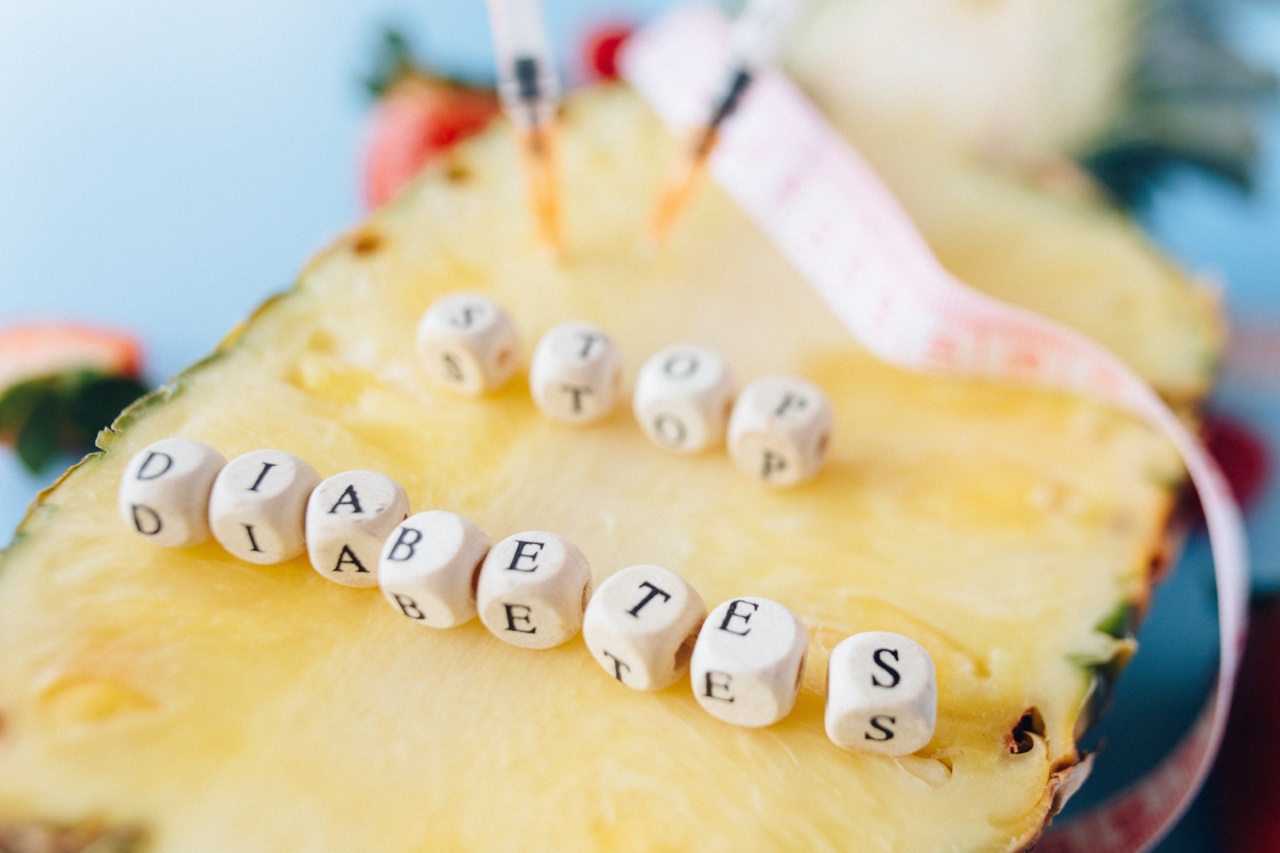Diabetes is a chronic condition that affects millions of people worldwide. The disease is characterized by high blood sugar levels, which can lead to serious complications such as heart disease, stroke, kidney failure, and blindness.
While there is no cure for diabetes, it can be managed through proper nutrition, exercise, and medication. In this article, we will focus on the role of nutrition in managing diabetes and how you can stop the disease in its tracks through the right diet.
Understanding Diabetes
Diabetes occurs when the body fails to produce enough insulin or becomes resistant to the insulin it produces. Insulin is a hormone that helps regulate blood sugar levels in the body.
When insulin is not doing its job, blood sugar levels can rise to dangerous levels. There are two types of diabetes:.
Type 1 Diabetes
Type 1 diabetes is an autoimmune disease in which the immune system attacks and destroys the cells in the pancreas that produce insulin. This type of diabetes is usually diagnosed in children and young adults, although it can occur at any age.
Type 1 diabetes requires insulin therapy, which is the sole treatment for this condition.
Type 2 Diabetes
Type 2 diabetes occurs when the body becomes resistant to insulin or fails to produce enough insulin to maintain normal blood glucose levels.
This type of diabetes is often linked to poor diet and lack of exercise and is more common in people over the age of 40. Type 2 diabetes can often be managed through lifestyle changes such as diet and exercise, although medication may be necessary in some cases.
The Role of Nutrition in Diabetes Control
Nutrition is a key component in the management of diabetes. A healthy diet can help control blood sugar levels, reduce the risk of complications, and improve overall health. Here are some nutrition tips for managing diabetes:.
1. Focus on Complex Carbohydrates
Carbohydrates are an important source of energy for the body, but they can also cause blood sugar levels to rise. Choosing complex carbohydrates that are rich in fiber can help control blood sugar levels and promote feelings of fullness.
Examples of complex carbohydrates include whole grain bread, brown rice, quinoa, and sweet potatoes.
2. Choose Low-Glycemic Index Foods
The glycemic index is a rating system that ranks foods according to their effect on blood sugar levels. Foods with a high glycemic index, such as white bread and sugary drinks, can cause blood sugar levels to spike.
Low-glycemic index foods, such as beans, non-starchy vegetables, and nuts, are digested more slowly and cause a slower rise in blood sugar levels.
3. Avoid Sugary Drinks
Sugary drinks such as soda, juice, and sports drinks are high in sugar and can cause blood sugar levels to spike. These drinks should be avoided or consumed in moderation.
Instead, choose water, unsweetened tea or coffee, or low-calorie drinks such as diet soda or flavored water.
4. Limit Saturated and Trans Fats
Saturated and trans fats can raise cholesterol levels and increase the risk of heart disease. These fats should be limited in the diet. Choose healthier fats such as olive oil, nuts, and avocado, and limit consumption of red meat and processed foods.
5. Increase Fiber Intake
Fiber is important for digestive health and can help control blood sugar levels. Aim for at least 30 grams of fiber per day from sources such as whole grains, fruits, vegetables, and legumes.
6. Control Portion Sizes
Controlling portion sizes is important for managing blood sugar levels and maintaining a healthy weight.
Use measuring cups or a food scale to ensure proper portion sizes, and avoid eating in front of the TV or computer, which can lead to mindless eating.
7. Spread out Meals and Snacks
Eating smaller meals and snacks throughout the day can help control blood sugar levels and prevent overeating. Aim for three small meals and two or three snacks per day, and space them out evenly throughout the day.
Conclusion
Nutrition is a powerful tool in the management of diabetes. By choosing healthy foods, controlling portion sizes, and spreading out meals and snacks, you can control your blood sugar levels and improve your overall health.
Talk to your healthcare provider or a registered dietitian for personalized nutrition advice and guidance.



























